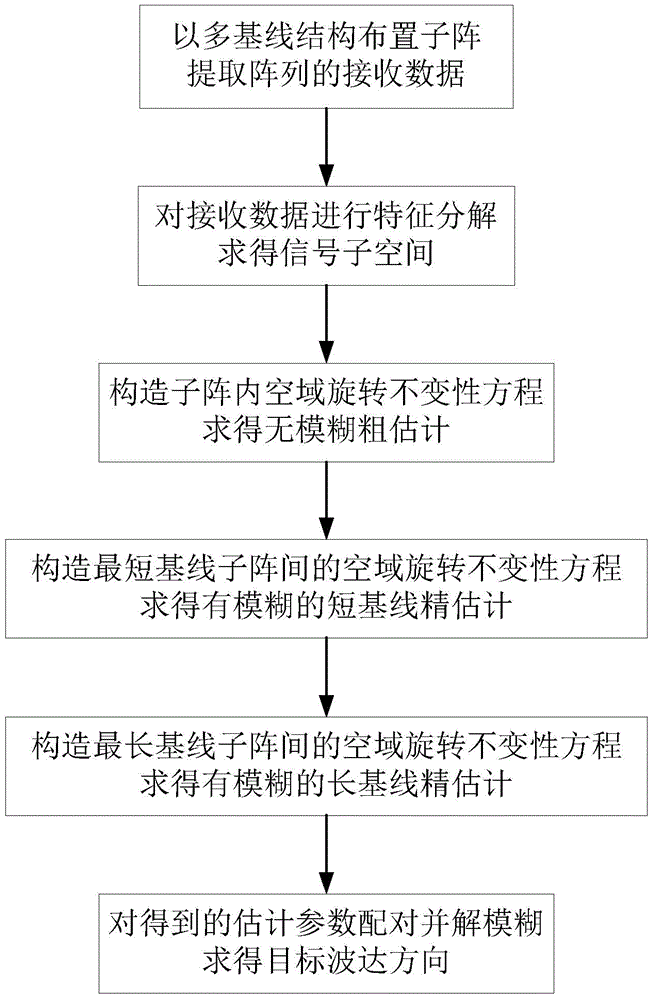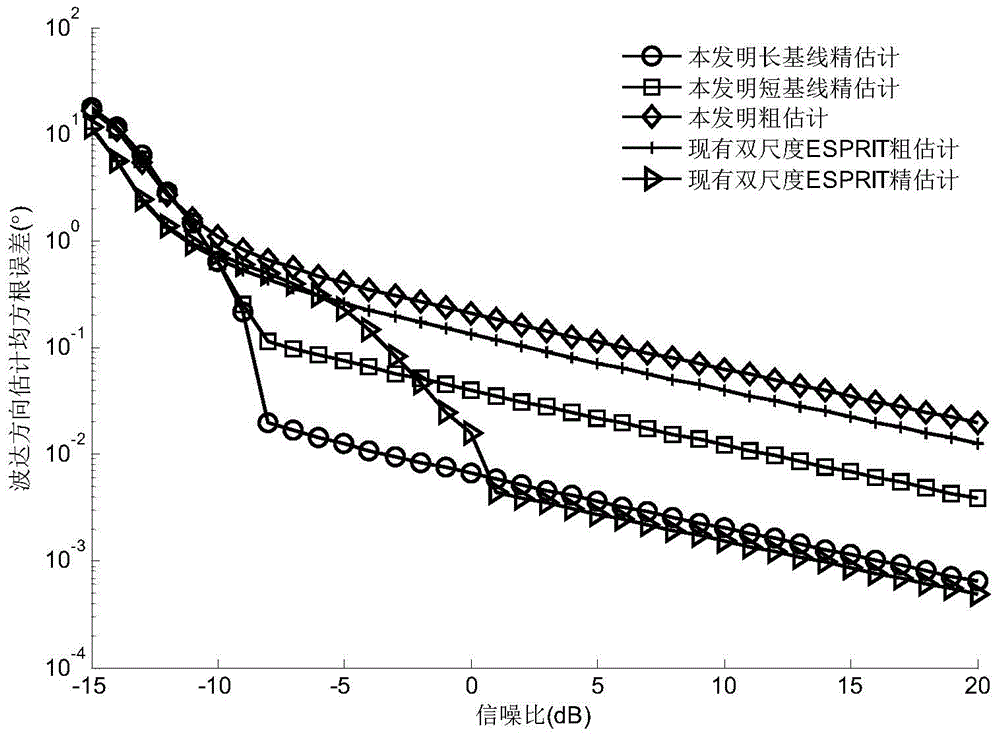Direction of arrival estimation method based on multi-baseline distributed array
A direction-of-arrival estimation and distributed technology, applied in radio wave direction/deviation determination systems, direction finders using radio waves, radio wave director components, etc., can solve the problem of direction-of-arrival estimation performance degradation and limited distribution The degree of expansion of the physical aperture of the array array can be solved to achieve the effect of reducing the difficulty of construction, reducing the requirement of signal-to-noise ratio, and expanding the physical aperture.
- Summary
- Abstract
- Description
- Claims
- Application Information
AI Technical Summary
Problems solved by technology
Method used
Image
Examples
Embodiment Construction
[0030] The content and effects of the present invention will be described in detail below in conjunction with the accompanying drawings.
[0031] refer to figure 1 , the present invention comprises the following steps:
[0032] Step 1: Arrange sub-arrays in a multi-baseline structure to form a multi-baseline distributed array, and extract the received data x(t) of the array.
[0033] 1a) Build a multi-baseline distributed array:
[0034] like figure 2 As shown, the present invention arranges sub-arrays in a multi-baseline structure to form a multi-baseline distributed array. The multi-baseline distributed array is composed of three identical sub-arrays arranged on the same horizontal line, namely figure 2 The first sub-array 1, the second sub-array 2 and the third sub-array 3 in . in:
[0035] The baseline length between the first sub-array and the second sub-array is D 12 ,D 12 >Md, the shortest baseline between sub-arrays; the length of the baseline between the first ...
PUM
 Login to View More
Login to View More Abstract
Description
Claims
Application Information
 Login to View More
Login to View More - R&D
- Intellectual Property
- Life Sciences
- Materials
- Tech Scout
- Unparalleled Data Quality
- Higher Quality Content
- 60% Fewer Hallucinations
Browse by: Latest US Patents, China's latest patents, Technical Efficacy Thesaurus, Application Domain, Technology Topic, Popular Technical Reports.
© 2025 PatSnap. All rights reserved.Legal|Privacy policy|Modern Slavery Act Transparency Statement|Sitemap|About US| Contact US: help@patsnap.com



